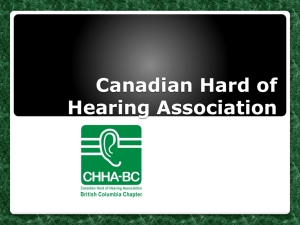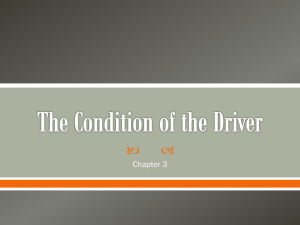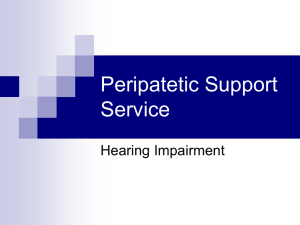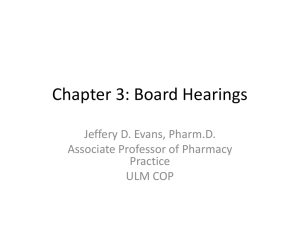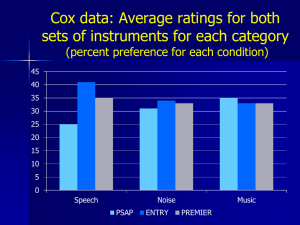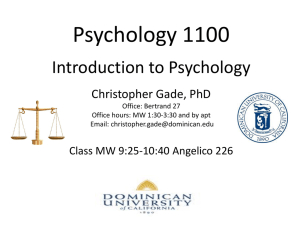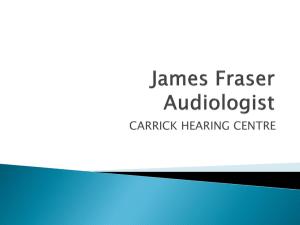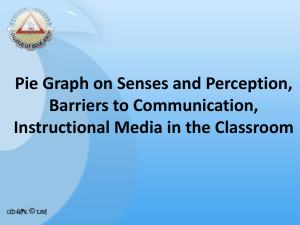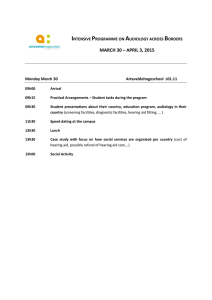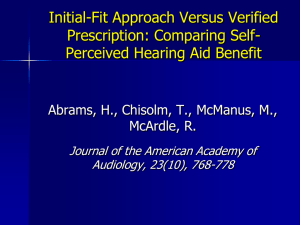Self-Fitting Hearing Aid Poster
advertisement
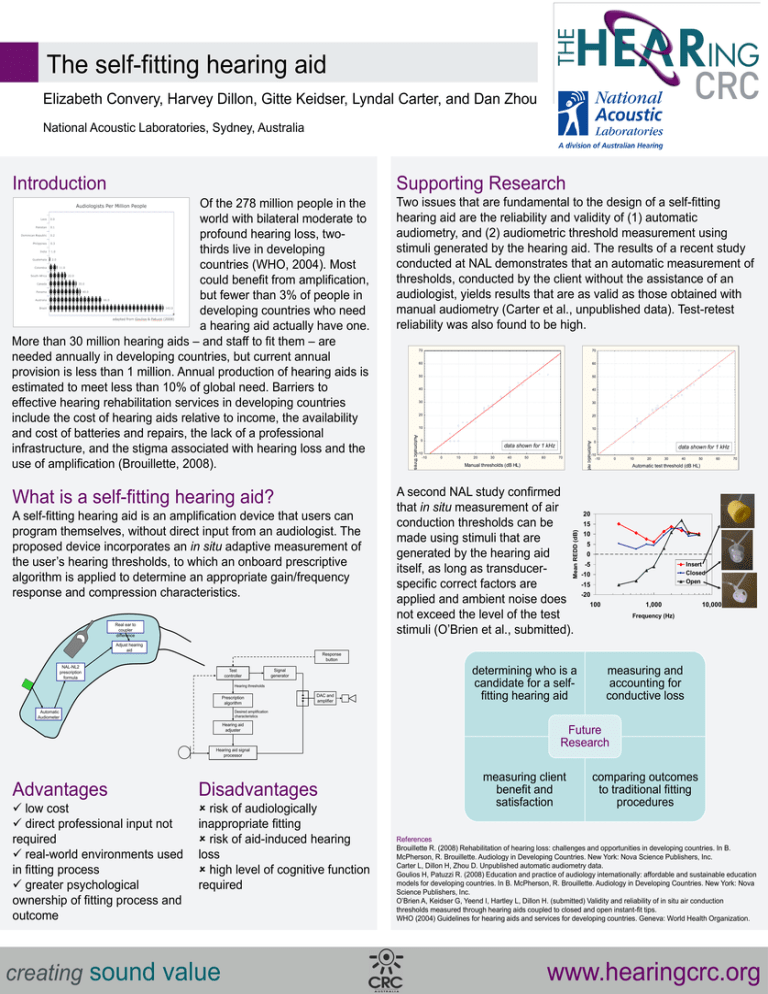
The self-fitting hearing aid Elizabeth Convery, Harvey Dillon, Gitte Keidser, Lyndal Carter, and Dan Zhou National Acoustic Laboratories, Sydney, Australia Supporting Research Of the 278 million people in the world with bilateral moderate to profound hearing loss, twothirds live in developing countries (WHO, 2004). Most could benefit from amplification, but fewer than 3% of people in developing countries who need a hearing aid actually have one. More than 30 million hearing aids – and staff to fit them – are needed annually in developing countries, but current annual provision is less than 1 million. Annual production of hearing aids is estimated to meet less than 10% of global need. Barriers to effective hearing rehabilitation services in developing countries include the cost of hearing aids relative to income, the availability and cost of batteries and repairs, the lack of a professional infrastructure, and the stigma associated with hearing loss and the use of amplification (Brouillette, 2008). Two issues that are fundamental to the design of a self-fitting hearing aid are the reliability and validity of (1) automatic audiometry, and (2) audiometric threshold measurement using stimuli generated by the hearing aid. The results of a recent study conducted at NAL demonstrates that an automatic measurement of thresholds, conducted by the client without the assistance of an audiologist, yields results that are as valid as those obtained with manual audiometry (Carter et al., unpublished data). Test-retest reliability was also found to be high. What is a self-fitting hearing aid? A second NAL study confirmed that in situ measurement of air conduction thresholds can be made using stimuli that are generated by the hearing aid itself, as long as transducerspecific correct factors are applied and ambient noise does not exceed the level of the test stimuli (O’Brien et al., submitted). Real ear to coupler difference Adjust hearing aid 70 70 60 60 50 50 40 40 30 30 20 20 10 10 0 0 data shown for 1 kHz 0 10 20 30 40 50 60 data shown for 1 kHz -10 -10 70 Manual thresholds (dB HL) Mean REDD (dB) -10 -10 Automatic retest threshold (dB HL) A self-fitting hearing aid is an amplification device that users can program themselves, without direct input from an audiologist. The proposed device incorporates an in situ adaptive measurement of the user’s hearing thresholds, to which an onboard prescriptive algorithm is applied to determine an appropriate gain/frequency response and compression characteristics. Automatic thresholds (dB HL) Introduction 0 10 20 30 40 50 60 70 Automatic test threshold (dB HL) 20 15 10 5 0 -5 -10 Insert Closed Open -15 -20 100 1,000 10,000 Frequency (Hz) Response button NAL-NL2 prescription formula Test controller Signal generator Hearing thresholds Prescription algorithm Automatic Audiometer DAC and amplifier determining who is a candidate for a selffitting hearing aid measuring and accounting for conductive loss Desired amplification characteristics Hearing aid adjuster Hearing aid signal processor Advantages Disadvantages low cost direct professional input not required real-world environments used in fitting process greater psychological ownership of fitting process and outcome risk of audiologically inappropriate fitting risk of aid-induced hearing loss high level of cognitive function required creating sound value Future Research measuring client benefit and satisfaction comparing outcomes to traditional fitting procedures References Brouillette R. (2008) Rehabilitation of hearing loss: challenges and opportunities in developing countries. In B. McPherson, R. Brouillette. Audiology in Developing Countries. New York: Nova Science Publishers, Inc. Carter L, Dillon H, Zhou D. Unpublished automatic audiometry data. Goulios H, Patuzzi R. (2008) Education and practice of audiology internationally: affordable and sustainable education models for developing countries. In B. McPherson, R. Brouillette. Audiology in Developing Countries. New York: Nova Science Publishers, Inc. O’Brien A, Keidser G, Yeend I, Hartley L, Dillon H. (submitted) Validity and reliability of in situ air conduction thresholds measured through hearing aids coupled to closed and open instant-fit tips. WHO (2004) Guidelines for hearing aids and services for developing countries. Geneva: World Health Organization. www.hearingcrc.org
